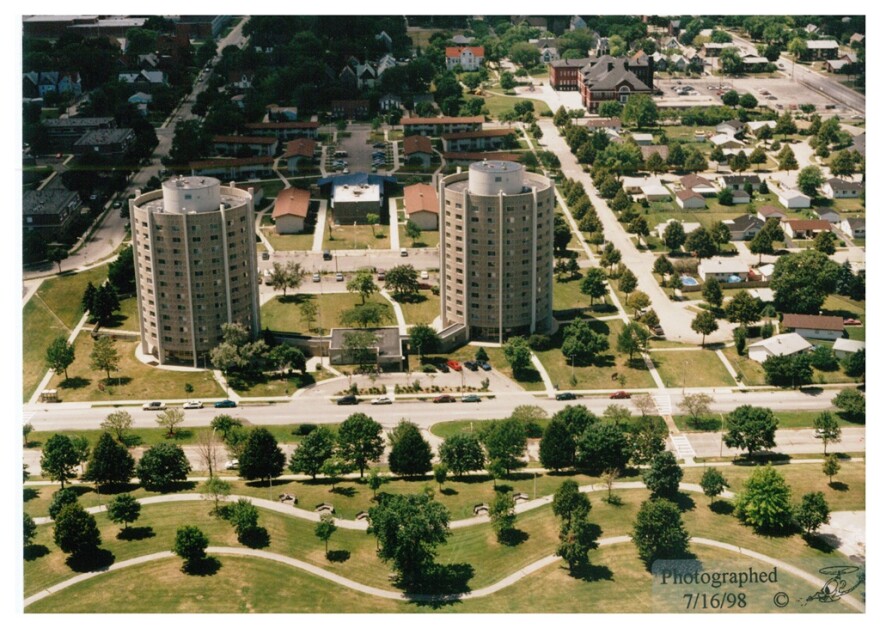
This week’s Bubbler Talk is all about buildings--round ones.
Wendy Necklet asked WUWM: What's the deal with all the round buildings?
Well, for this story what better place to start than one of the city’s most iconic hotels, the Pfister.
Peter Mortensen is the concierge and the unofficial hotel historian. He’s worked here for about 30 years and believe me when I say he’s a really, really smart guy. “I’ve never run across an obscure fact I didn’t like,” he says.
Now, if you’re anything like me, you had no idea the Pfister was a round building. I mean, I knew the top floor was round, but not the majority of the structure.

The first six or seven floors were part of the original construction in the 1890s. In the 1960s, the building got an upgrade and the addition of a tower. So standing on the ground floor, it looks like a normal square-ish building, but take the elevator up to the seventh floor and things start to look a bit different.
“This is sort of the plinth that the tower stands on,” Mortensen says.
The rooms in the tower are more wedge shaped than circular, but Mortensen says it gives the illusion of a larger space. He says the round addition came during a time when architects were looking to buck the trend.
“It was really the flowering of the idea of the building as object, the building as a work of art,” Mortensen says.
Circular buildings were so in at the time, he says, that Milwaukee almost ended up with a space aged convention center.

“It would be this sort of flying saucer convention center in the middle with four towers. Four round sort of vaguely phallic towers in each corner connected by underground. It looked like a drawing from Buck Rogers. It was very modern,” Mortensen explains.
While Milwaukee didn’t get the convention center, it did get a number of circular high rises owned by the Milwaukee Housing Authority.
Warren Jones is the development director and says that several of the circular high rises have been torn down in recent years, but seven remain. He also points out that what looks round to the eye isn’t completely.
“They’re kind of octagonal, I guess you would say,” Jones says.
He says it would have cost a lot of money to construct a truly circular building because everything would have to be customized. Not surprisingly, the majority of these buildings came about in 60s, but Jones says these weren’t just about making a statement.

“A lot of the land that was utilized was surplus property from the city and they’re small plots. You could get the most amount of living units in a round building,” Jones says.
Jones also says that round buildings are some of the safest and strongest because there’s one continuous structural support.
So, why did round building never really catch on? Robert Greenstreet is dean of UW-Milwaukee’s school of Architecture and Urban Planning.
“Furniture is square or rectangular, plumbing is rectilinear or square, shelves are square. So if you have a circular wall, you have difficulty getting in the basic functions of the space. And if you’re trying to do multiple units, circles don’t play well together,” Greenstreet says.
In other words, it’s a square world.
Have a question you'd like WUWM to answer? Submit your query below.
_










